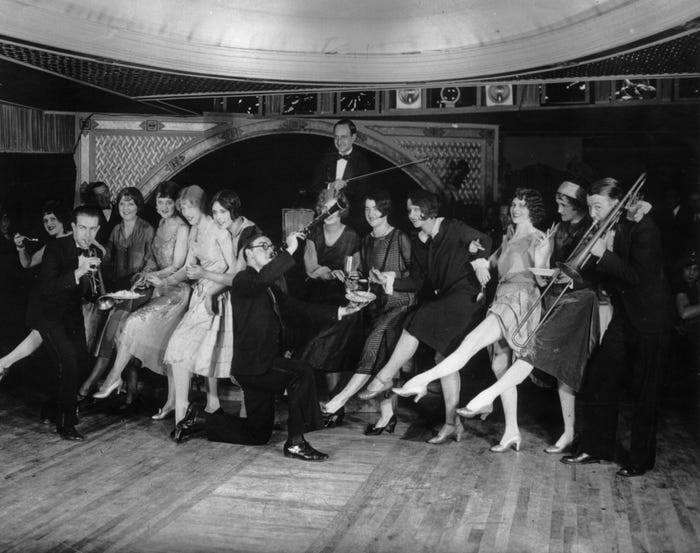
BREAKING: Vintage photos have resurfaced, showcasing the vibrant life and cultural shifts of the 1920s, a decade marked by jazz, flapper fashion, and profound societal changes. As we approach the centennial of this transformative era, these compelling images remind us of the joy and struggle that defined the Roaring Twenties.
The 1920s ushered in significant advancements, both culturally and politically. With the 19th Amendment ratified on August 18, 1920, women gained the right to vote, although this victory was limited for women of color. Celebrations erupted nationwide as suffragettes championed their hard-fought rights, a reminder of the ongoing fight for equality.
This decade was also characterized by the Harlem Renaissance, which celebrated Black art and culture. Jazz, propelled by icons like Louis Armstrong, dominated the music scene, reflecting the era’s creativity and innovation. As the movement flourished, it highlighted the complexities of race relations in America, with segregation still rampant.
The 1920s saw the rise of opulence, epitomized by the construction of luxury estates such as Mar-a-Lago, built for cereal heiress Marjorie Merriweather Post and finance magnate Edward F. Hutton. This glamorous lifestyle was captured by F. Scott Fitzgerald in his classic, “The Great Gatsby,” which remains a cultural touchstone today.
However, the decade was not without its darker realities. The era of Prohibition began in 1920, leading to the rise of speakeasies and organized crime. While some celebrated the ban on alcohol, others sought hidden bars to indulge, highlighting the contrast between societal progress and persistent inequalities.
Urbanization surged as the U.S. Census revealed that, for the first time, over 50% of Americans lived in cities. The shift from rural to urban living transformed lifestyles, bringing about new architectural styles like Art Deco. The skyline of cities like New York began to change dramatically with the construction of skyscrapers, including the iconic Chrysler Building, which broke ground in 1928.
Transportation also evolved rapidly. The Ford Model T, affordable and revolutionary, connected rural Americans with urban centers, paving the way for the modern highway system. Meanwhile, public transportation advancements, such as subways and railroads, became essential to daily life.
Cultural phenomena flourished during this decade. From the exuberant atmosphere of Coney Island, where fairs and dance contests thrived, to the emergence of silent films transitioning into the “talkies,” the 1920s were a time of entertainment and innovation. The first commercial radio broadcast in 1920 changed how people consumed news and art, marking a shift in communication.
Despite the progress, challenges persisted. Discrimination against minority groups remained entrenched, as illustrated by the segregation practices that defined social interactions. The struggles faced by Japanese “picture brides” and the ongoing fight against Jim Crow laws underscored the inequities that continued to plague society.
Today, as we reflect on these vintage photos, we are reminded of the resilience and spirit that fueled the Roaring Twenties. They capture a time of profound change—the struggles for rights, the exuberance of new cultural expressions, and the stark realities of inequality.
Next Steps: As we commemorate this pivotal decade, consider how its lessons resonate in today’s ongoing conversations about equality and culture. Stay tuned for more updates and retrospectives as we move closer to the centennial of the 1920s, a decade that shaped modern America in countless ways.







